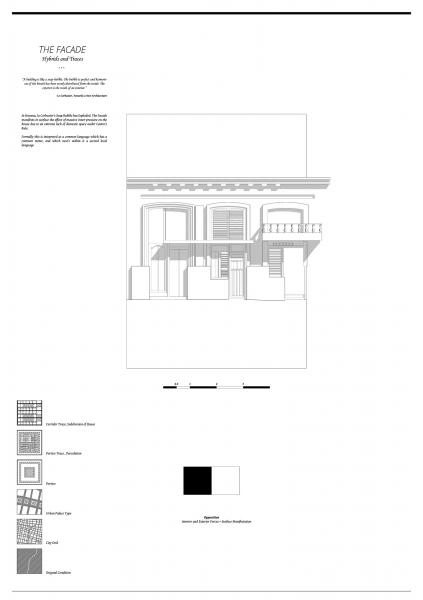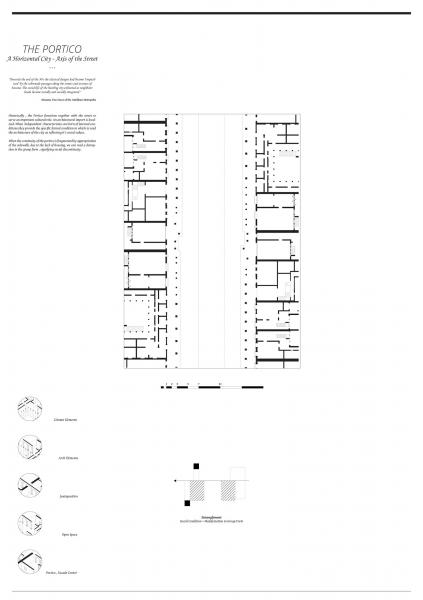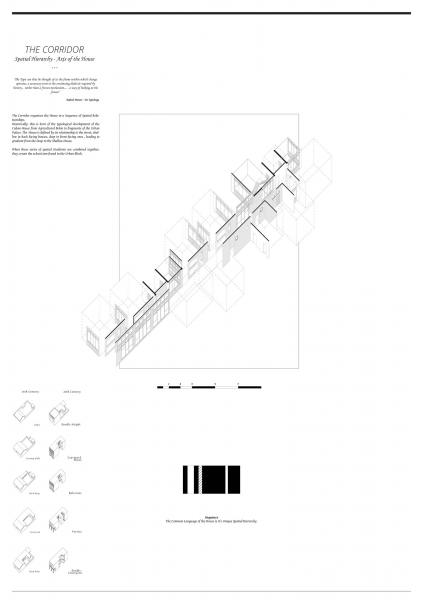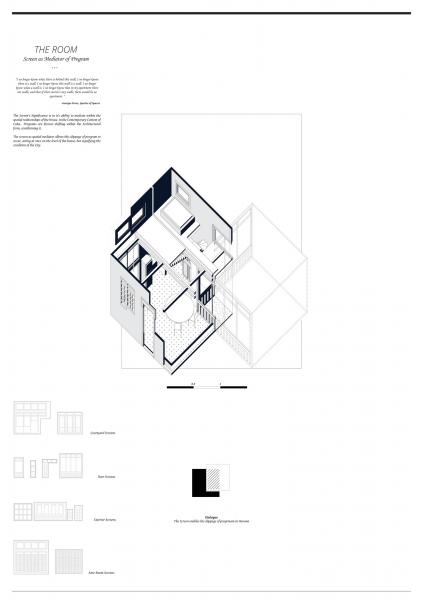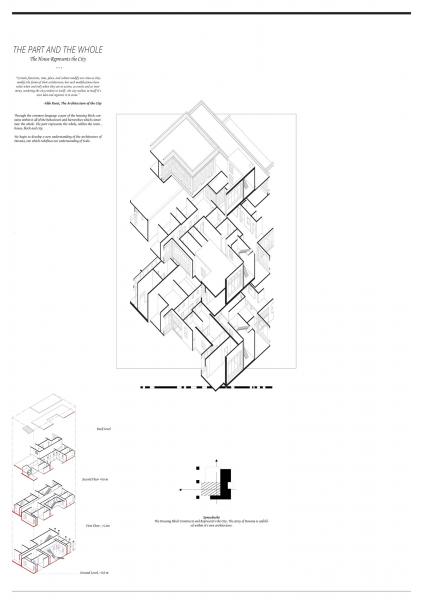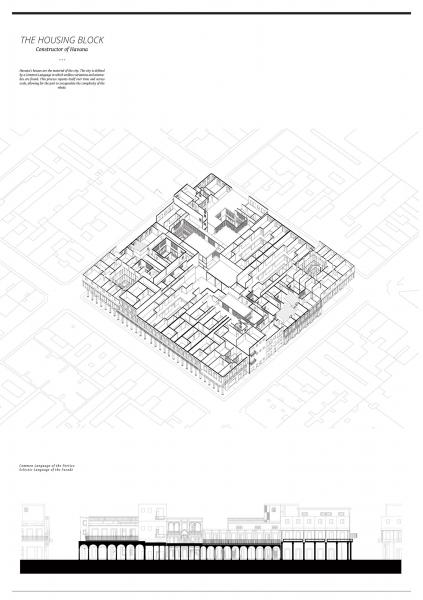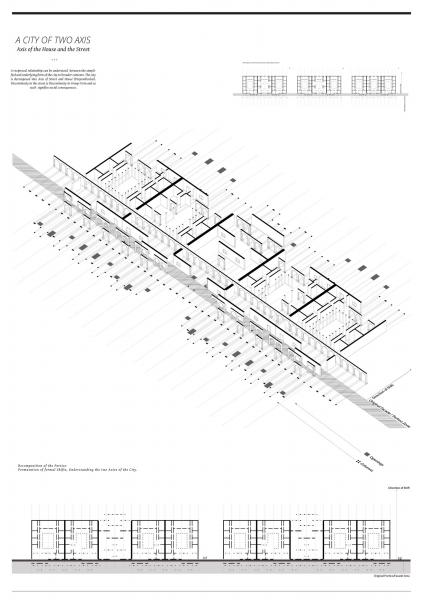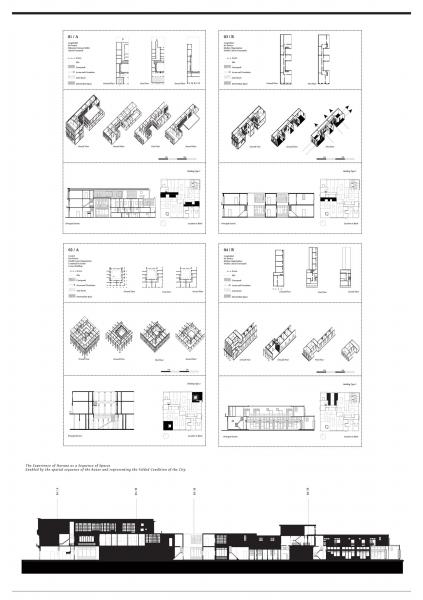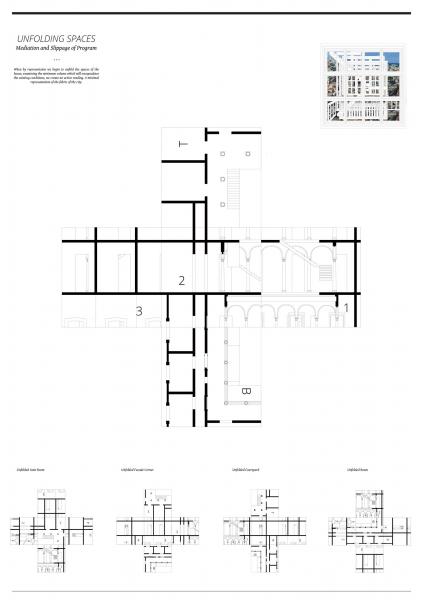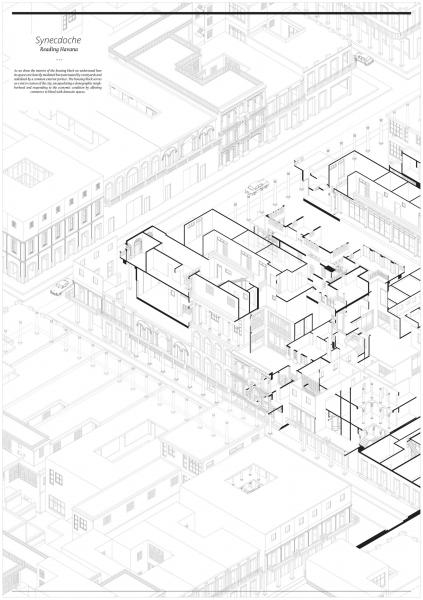The Facade
"A building is like a soap bubble. The bubble is perfect and harmonious if the breath has been evenly distributed from the inside. The exterior is the result of an interior." -Le Corbusier
In Havana, Le Corbusier's Soap Bubble has exploded. The facade manifests in surface the effects of inner pressure on the house due to lack of domestic space. Formally this is interpreted as a common language which has a common meter, and which nests within it a second local language.

